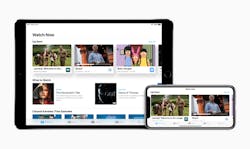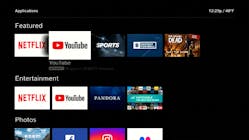Over-the-top (OTT) video may still be viewed by many (if not all) cable operators as an unwelcomed distraction from their pay-TV offerings. However, many also have realized that video viewers enjoy OTT options so much that it’s in the operator’s best interests to accommodate – and, in some cases, mimic – subscription video on demand offerings. This strategy may not halt cord cutting, but it may slow it. About 33% of cord cutters would have stayed with their pay-TV provider had it provided a Netflix-style complement, according to a recent Parks Associates study.
However, whether merely integrating an outsider’s subscription video on demand service or trying to launch one themselves, operators may be chagrined to discover that they must weaken one of their points of competitive differentiation, say observers.
Begrudging acceptance
The appeal of subscription video on demand (SVOD), over the top (OTT) and otherwise, is undeniable. Users like the option of watching whatever program strikes their fancy when it’s most convenient. The success of OTT video providers such as Netflix and Amazon Prime in establishing demand for their exclusive content means that cable operators can’t merely expand their video-on-demand libraries in response. Thus, we’ve seen a growing number of operators bend to the inevitable and integrate access to third-party SVOD offerings into their guides and programming tiers. And while such an integration usually starts with adding a Netflix icon somewhere on their interface screens, it would behoove operators not to stop there. Parks Associates also reports that more than a third of U.S. broadband households subscribe to multiple OTT video services; 15% subscribe to three or more. Operators such as Comcast and Cox have followed this path already.
Cable operators have begun to integrate OTT services into their pay-TV packages. (Source: Comcast)
A number of cable network evolutions enable the proper integration of OTT services, with the move toward IP-based, multi-screen capable video delivery chief among them. But as operators bring SVOD services into their programming universe, particularly when viewed on an in-home TV screen, they must be willing to give up one of the chief selling points they formerly used to combat cord cutting: a better viewing experience, particularly in terms of video quality, than those OTT service providers could offer.
“When it was a second-screen device that was primarily consuming this content, then the requirements on that were, from a quality of experience position, a bit lower,” explains Richard Mansfield, head of Media Delivery & Advertising Products at MediaKind (formerly Ericsson Media Solutions). “What we’re seeing now is, as consumers expect to be able to see this high-value content [everywhere] – it could be sports content or similar – then that really places requirements on things like the delivery mechanism itself, the time to delivery, but also very much so on the picture quality and the features and functions that a user expects to have.” In other words, users expect the same quality of experience when they consume the integrated OTT content that they enjoy when they view the pay-TV provider’s linear content.
Large operators with deep pockets can enable this seamless integration as part of their network upgrades, as Comcast has done with its Xfinity X1 platform (and operators such as Cox, Rogers Communications and Videotron have done by adopting X1 themselves) as part of a multiscreen service initiative. Smaller operators must look to help from others. Many have taken a “dance with the devil” approach that sees them deploy set-top boxes and other interface devices based on operating systems created by OTT services providers such as Google (Android TV Operator Tier) and Apple (tvOS). Android TV-enabled set-top boxes are available from several vendors; SNL Kagan expects worldwide shipments of all Android TV devices, including set-top boxes, to grow from 7.6 million in 2016 to 40.1 million in 2021.
Smaller operators also can partner with streaming video services providers who specializes in the transition to OTT support – as well as with a fellow service provider to help pay the cost (see, for example, “Citizens Fiber taps MobiTV for app-based pay TV”).
The ability to offer multiscreen experiences better than that of OTT providers could prove a differentiator. (Source: Comcast)
We’re not done with you yet
Meanwhile, cable operators have begun to ponder whether to chase the cord cutters and “cord nevers” by offering OTT services of their own.
“One of the bigger changes starting to happen in the market now is the offering of pure OTT services,” comments Mansfield. “I think we’ve had companion OTT services now for some time. But now that’s seen as an expectation, as a requirement on all of the operators to be able to offer that service to their users.”
Again, it may help to partner with an OTT service provider. For example, Charter and Apple have reached an agreement that will see Charter’s new Spectrum TV app offered as part of Apple TV for access on Apple TV 4K, iPads, and iPhones with integration with Siri and the Apple TV app. Charter, meanwhile, will offer their customers Apple TV 4K, as well as iPhones and iPads. The collaboration is built around Apple’s recently unveiled tvOS12 operating system.
Regardless of how they choose to do it, operators who have given up attempting to differentiate on picture quality can separate themselves from other OTT service sources based on breadth of features. Apps that can replicate the set-top feature set on a mobile screen – aggregation, recommendation, cloud DVR, etc. – can offer a true alternative to a “standard” OTT offering. Cloud DVR capabilities on a streaming service is a feature just reaching the market from operators, notes Mansfield. “This is enabling the operators to differentiate from the pure OTT providers and bring new features and new functionality on top, but also bring in their content as well,” he notes.
Of course, to provide cloud DVR one must have cloud capabilities. Mansfield notes that, in general, a cloud-based architecture will prove the most efficient way to offer feature-rich OTT services. But he allows that not every operator is ready to take this step right now.
OTT streaming video services suppliers have changed the way people consume video. The evolution of traditional pay-TV service providers toward a more OTT-like delivery mechanism – both the accommodation of multiscreen access to OTT services within their current pay-TV offerings as well as the development of streaming options for those who refuse conventional subscription models – has therefore become a necessity for cable operators large and small.
Stephen Hardy is editorial director of Broadband Technology Report.
Learn more about video trends
You can now view on-demand the May 2018 SCTE∙ISBE LiveLearning Webinars™ for Professionals webcast, produced by BTR, "4K/HDR/UHD Video Delivery." Is your network ready for the next generation of video? Find out in this webinar, which will examine the current status of next generation video formats and the demands they will place on cable operator networks. Register for the webinar and view it now!







